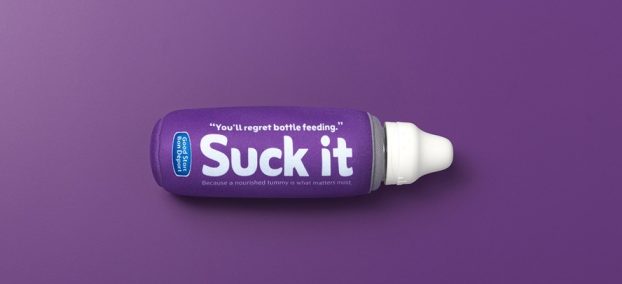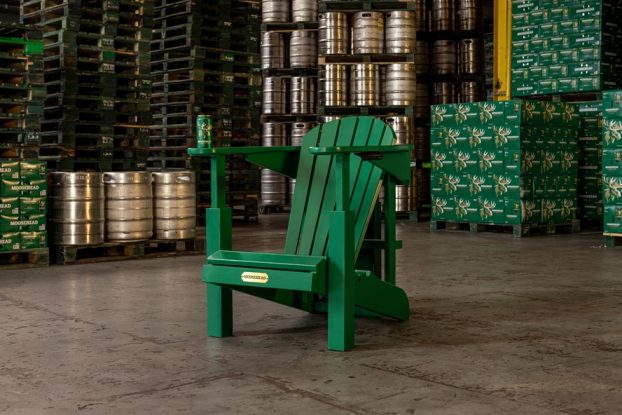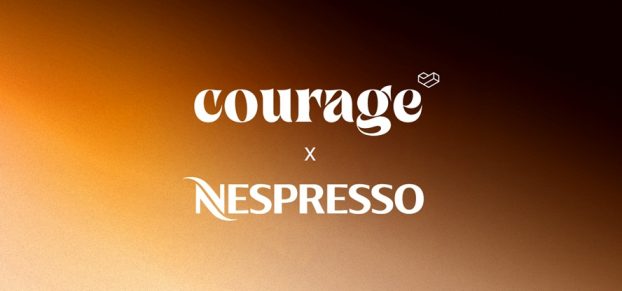The Top Line: Launched in 1987, this glossy, Winnipeg-based teen publication – formerly known as What! A Magazine – is distributed in 1,200 high schools across the country six times a year. Its circulation has grown in that time from 10,000 to approximately 250,000.
Why They Matter: There’s a video that publisher Nancy Moore loves to play for prospective clients. It shows Canadian rock band Econoline Crush playing on stage beside enormous packs of Wrigley’s gum, while the teens in the audience dance madly. When the concert is over, kids can be seen passing out free packs of Juicy Fruit; at one point, the camera even catches the lead singer signing gum wrappers.
The event was the culmination of a 1998 promotion organized by the magazine, which offered students the chance to win a free concert for their school, sponsored by Juicy Fruit. And it typifies the sort of opportunity that What – which was founded by Moore and her husband Doug Martin – strives to create for corporate partners. ‘Advertisers like [that kind of event],’ she says, ‘because [kids are] getting involved with the product and it’s front and centre.’
Offering advertisers more than just traditional on-page advertising is key to What’s strategy, Moore says. In addition to promotions like the ‘win a concert’ initiative (now an annual event), the magazine does in-school sampling programs three times a year. And in September it spun off a Web site (www.whatmagnet.com), which will be tied in to all of its promotional activities.
Because there’s a degree of uneasiness out there when it comes to in-school marketing, Moore says the magazine must be careful to cultivate relationships with schools and make sure that its programs have approval from educators.
In the case of sampling programs, for example, the magazine sends a master form to all schools, inviting them to pick and choose from among various categories of advertiser. Most institutions, as it happens, are only too happy to receive graft for their students. Moore says they get an 85% response rate from schools, and distribute half a million product samples across the country. Advertisers who’ve taken part in the sampling programs include Johnson & Johnson and Procter & Gamble, among others.
One of the magazine’s more inventive sampling programs was conducted this past September on behalf of Anjou, Que.-based J.R. Ouimet, maker of Cordon Bleu canned goods. The company, which had recently expanded in Ontario, wanted to introduce teens to its line of pasta-and-meatball stews. So What organized a ‘Pasta Day 2000’ event, in which participating schools received not only cans of the product, but also red-and-white checkered tablecloths, paper plates, napkins and cutlery. ‘It really went over well,’ Moore says. ‘Who knew?’
In the case of its contests, meanwhile, What attempts to make certain that there’s something in it both for the winning students and for their school. The winners of the annual concert promotion, for example, get a band to visit their school, while the school itself receives $1,000 to spend on whatever resources it chooses. That obviously helps build support from educators for the program – and, by extension, for the sponsor.
Marion da Ponte, sales manager with Toronto-based da Ponte & Richardson, the independent rep house that handles What, says the wide range of turn-key promotional and sampling opportunities offered by the magazine makes it a desirable property – more of a full-service marketing company than simply a one-dimensional publication.
A priority now is to start creating more of a presence for the magazine at youth-oriented events. At present, it’s involved in events ranging from Canadian Music Week to Students on Ice, a scientific research program on the Antarctic that will include a youth summit next year. And Moore wants to step up this sort of participation, thereby offering its advertisers and sponsors the chance to reach teens at these happenings.
It’s all part of a larger objective: to position the publication as a one-stop shopping source for the advertisers interested in this target market. ‘We’re going to get them where they live,’ she says.
Sidebar: Watch split along gender lines
Watch is dead.
The free teen publication, rival to What (above), is no longer to be found in Canadian high schools. But a successor has taken its place – two successors, in fact.
In September, Toronto-based research and media firm Youth Culture decided to retire Watch – a publication first launched in 1993 – and replace it with a pair of new titles: Fuel, which targets boys 14-17, and Verve, which goes after their female counterparts. (Bang, a two-year-old spin-off magazine aimed at the 11-13 age group, has been shelved.)
Youth Culture president Doug Stewart says the decision was sparked by some online research conducted back in the spring.
One of the goals of that exercise, he explains, was to figure out how to increase Watch’s male readership. Feedback indicated that teen boys and girls were demanding very different things from the publication. Guys wanted more sports, more humour (especially of the ‘pain is funny’ variety) and more of a focus on the music they like: rap, heavy metal and punk. Girls wanted more relationship articles, more beauty and style advice, and more emphasis on musical genres such as r&b and light rock.
In the end, it became clear that the simplest solution was to split Watch along gender lines into two distinct publications.
Stewart says the move produced an almost immediate payoff on the advertising front. As a female-targeted publication, Verve has proven much more successful than Watch at attracting advertisers in the fragrance, cosmetics and health care categories. ‘They’re more interested now, both in terms of efficiencies and the environment,’ he says. ‘They didn’t really want to run lipstick ads opposite articles on heavy metal.’
Similarly, Fuel has done well with manufacturers of sports equipment and apparel, such as Nike and Adidas, as well as retailers in that category. Consumer electronics and male fashion are also proving strong. (In addition, there are a substantial number of advertisers with cross-gender appeal that go into both books – among them Guess, MusicWorld, Nintendo, Wrigley and Hershey.)
Stewart says overall advertising revenues have doubled since last fall, from $175,000-$200,000 per issue of Watch to a combined total of $350,000-$400,000 a month for Fuel and Verve.
Like What, Youth Culture’s magazines are distributed through high schools – approximately 2,700 in all – across the country. Current circulation figures are 100,000 for Fuel, and 150,000 for Verve.
Retiring an established brand like Watch was a daunting prospect, Stewart concedes. To create some sense of continuity, the first issues of Fuel and Verve featured the words ‘Watch presents’ on the upper left-hand corner of the cover.
‘Our relationship with kids, with schools and with clients was put on the line,’ he says. ‘But I think we handled it well. In some ways it was short-term pain for long-term gain.’
Also in this report:
– More, more, more: Advertisers bemoan dearth of youth media p.22
– YTV reaches kids ‘beyond the screen’: Advertisers buy in to multi-layered approach p.22
– Globe courts campus crowd with custom site p.25
– Watch split along gender lines p.27
– MuchMusic spins multi-channel promos p.28
– Tweens are media hogs: Demonstrate voracious appetite for all forms of information, says YTV study p.28























